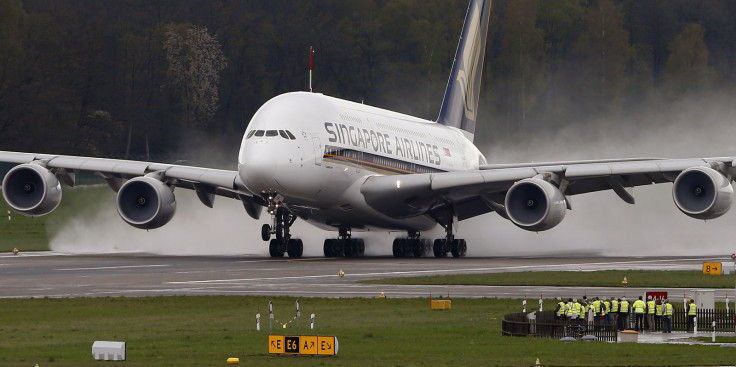A380: The world's biggest passenger plane could get even bigger
New wing technology could see the superjumbo increase in size.

The A380 superjumbo jet is the largest passenger plane in the sky and now it could be set to get even bigger. Well, its wings are, anyway.
While the body of the 73m-long aircraft isn't about to undergo any major changes or promise passengers more space inside, Airbus is looking at increasing the length of its wingspan by up to 5m.
The manufacturer is researching the addition of 'winglets' in order to help reduce drag and improve fuel efficiency by up to 4% - a move that Airbus hopes will make the plane, whose sales are stalling, more appealing for new customers.
With the new upgrade, the A380's wings would measure in at almost 85m, and would require only minor modification in order to install. The winglets would allow carriers to reap greater efficiency without having to replace engines with more fuel-friendly models or see Airbus having to launch the A380Neo, which would have costly re-designed airframe and new turbines.
"We will not launch an A380Neo, there's no business case now to do that, this is absolutely clear," said Airbus's commercial aircraft chief Fabrice Bregier. "But it doesn't prevent us from looking at what could be done to improve the performance of the aircraft. So having a little bit more efficiency from the engines is clearly an option, and looking at whether we could bring new winglets is also probably a good possibility."
The A380, which was introduced into service back in 2007 with Singapore Airlines making the first commercial flight, has seen orders dry-up as of late with not one new sale of the $436.9 million (£343.9m) plane in 2016.
Rumours within the aviation industry claim the A380 could be scrapped altogether and Airbus is currently planning how to drop its output below just 12 planes produced a year – a figure known as 'rate one' and the amount needed to break even unit-by-unit.
Should the winglets be able to save just 1% in fuel, it would see airlines save thousands on fuel each journey.
Didier Evrard, Airbus's commercial programs chief, told Bloomberg that studies into the winglets are progressing and stem from technological advancements as well as the need to make the A380 more efficient. "Ten or 15 years ago we were not able to design winglets with the right balance or drag."
Airbus has said that it would only follow-through with the idea should they receive enough interest, but there appears to be hope the fuel-saving technology might provide enough of an upgrade to see carriers open-up their cheque books.
The A380, while being the world's biggest commercial aircraft is not the biggest plane craft in operation. The Ukrainian-built Antonov AN-225 is a military cargo plane that holds the title of being the longest and heaviest aeroplane ever built.
© Copyright IBTimes 2025. All rights reserved.






















